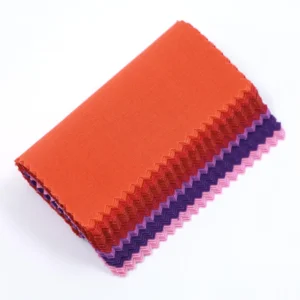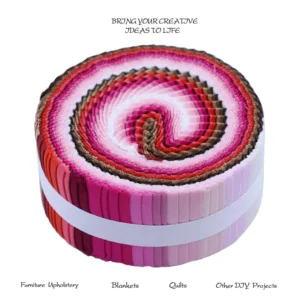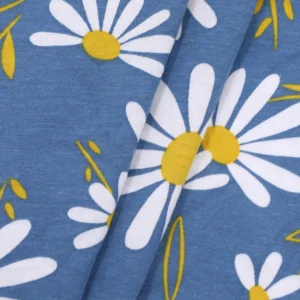Ever wondered where the fabric for your favorite clothes comes from? In today’s globalized world, the journey of a piece of cloth can span continents. From the bustling factories of Asia to the historic mills of Europe, fabric production has a rich and diverse history.
In this blog post, we’ll take a deep dive into the global fabric industry, exploring the major textile hubs and the factors that influence where fabrics are made. We’ll discuss the impact of technology, labor costs, and sustainability on fabric production. So, let’s embark on a textile adventure and discover where your clothes are really coming from.
Where is Fabric Made?
The textile industry is a vast and interconnected network that spans the globe. While fabrics can be produced in almost every country, certain regions have emerged as major hubs for textile manufacturing. Let’s explore some of the key players:
Asia: The Textile Powerhouse
- China: As the world’s largest textile producer, China dominates the global market. Its vast infrastructure, skilled workforce, and competitive costs make it a prime destination for textile manufacturing.
- India: India is another major textile producer, known for its traditional crafts and modern manufacturing facilities. It is a significant exporter of cotton, silk, and other fabrics.
- Bangladesh: Bangladesh has a thriving textile industry, particularly in the ready-made garment sector. It is a major supplier of clothing to global brands.
- Vietnam: Vietnam has experienced rapid growth in its textile industry, attracting investments from international brands due to its favorable labor costs and business environment.
Europe: A Historic Textile Center
- Italy: Italy is renowned for its high-quality fabrics, especially silk and wool. Its heritage in textile production dates back centuries.
- Turkey: Turkey is a significant textile producer, known for its cotton and synthetic fabrics. It is a major exporter of textiles to the European and Middle Eastern markets.
- Portugal: Portugal has a strong textile industry, specializing in knitwear and denim. It is known for its high-quality standards and sustainable practices.
Other Notable Regions
- North America: While the U.S. and Canada have a declining domestic textile industry, they still produce a variety of fabrics, particularly for niche markets.
- South America: Countries like Brazil and Colombia have growing textile industries, focusing on cotton, linen, and synthetic fabrics.
- Africa: While the textile industry in Africa is still developing, there are increasing efforts to promote local production and self-sufficiency.
Factors influencing where fabrics are made include:
- Labor costs: Lower labor costs in developing countries often attract textile manufacturers.
- Infrastructure: Adequate transportation, energy, and water infrastructure are essential for textile production.
- Government policies: Government incentives and regulations can influence the attractiveness of a particular location for textile manufacturing.
- Proximity to markets: Being located near major markets can reduce shipping costs and improve time-to-market.
- Raw material availability: Access to raw materials, such as cotton, wool, and synthetic fibers, is a key factor in textile production.
As the global textile industry continues to evolve, new trends and developments will likely emerge, shaping the future of fabric production worldwide.
Where is Quilting Fabric Made
Quilting fabric can be made in many countries around the world, depending on factors such as climate, economic conditions, and trade agreements. However, some of the major producers of quilting fabric include:
- China: China is a major producer of quilting fabric, known for its wide range of fabrics and competitive prices.
- India: India is another significant producer of quilting fabric, with a long history of textile manufacturing.
- United States: The United States has a well-developed textile industry and produces a variety of quilting fabrics, including high-quality cotton and flannel.
- Japan: Japan is known for producing high-quality quilting fabrics, including silk and cotton blends.
- South Korea: South Korea is a major producer of quilting fabric, especially for the domestic market.
- Taiwan: Taiwan is another significant producer of quilting fabric, known for its high-quality and affordable options.
It’s important to note that this is not an exhaustive list, and quilting fabric can be made in many other countries as well. The specific origin of a quilting fabric can vary depending on the brand, retailer, or manufacturer.
Where Does Fabric Come From?
Fabric primarily comes from natural and synthetic sources.
Natural Fibers
- Plant-based: Cotton, linen, hemp, jute, bamboo, and ramie are examples of plant-based fibers.
- Animal-based: Wool, silk, cashmere, alpaca, and angora are animal-based fibers.
Synthetic Fibers
- Man-made: Polyester, nylon, acrylic, rayon, and spandex are common synthetic fibers.
These fibers are processed in textile mills to create various types of fabrics, which are then used to make clothing, home goods, and other products.
What Type of Factory Makes Fabrics?
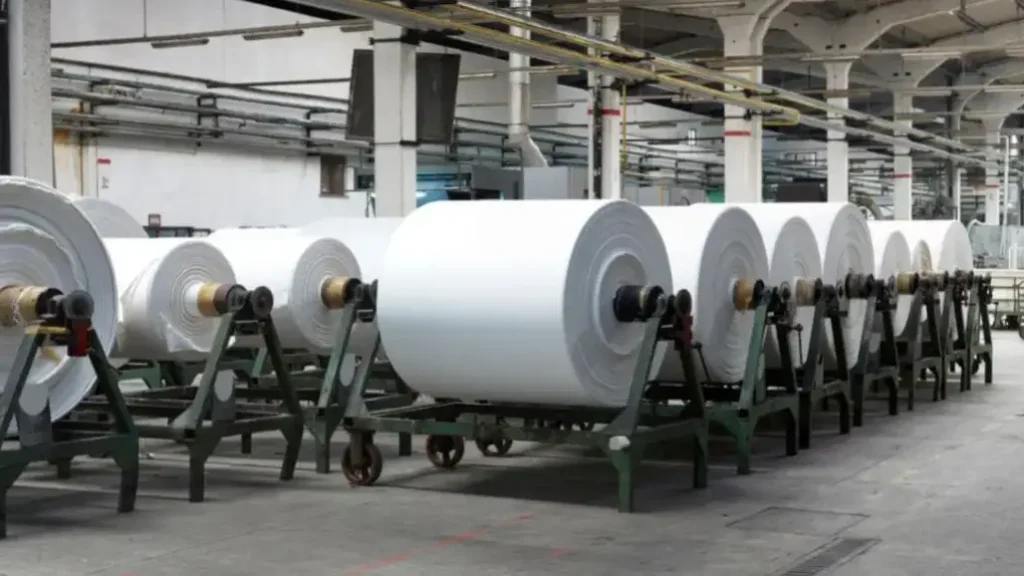
Textile mills are the backbone of the fabric industry. They come in various sizes, from small, family-owned operations to massive, multinational corporations. The type of factory and its specific focus can vary widely, depending on the types of fabrics it produces.
Types of Textile Mills
- Cotton Mills: These mills specialize in processing cotton, one of the most widely used natural fibers. They often have departments for ginning, spinning, weaving, and finishing cotton fabrics.
- Woolen Mills: Woolen mills focus on processing wool, another popular natural fiber. They may have specialized equipment for carding, spinning, and weaving wool.
- Synthetic Fiber Mills: These mills produce fabrics made from synthetic fibers like polyester, nylon, and acrylic. They often have advanced machinery for polymer production and fiber extrusion.
- Knitting Mills: Knitting mills specialize in producing fabrics using knitting machines. They can produce a wide range of knit fabrics, including sweaters, socks, and scarves.
- Dyeing and Finishing Mills: These mills focus on treating fabrics with various processes, such as dyeing, printing, and finishing. They may be independent operations or part of larger textile mills.
The Production Process
A typical textile mill involves several key stages in the production process:
- Fiber Preparation: Raw fibers are cleaned, sorted, and blended as needed.
- Spinning: Fibers are spun into yarn, which can be made from a single fiber or a blend of fibers.
- Weaving or Knitting: Yarn is woven or knitted into fabric.
- Finishing: Fabrics are treated with various processes, such as dyeing, printing, and finishing, to give them desired properties.
Emerging Technologies
In recent years, innovative technologies have been disrupting the textile industry. 3D printing is one such technology that is gaining traction. It allows for the creation of customized fabrics with complex patterns and structures. Digital fabrication methods, such as laser cutting and waterjet cutting, are also being used to produce fabrics with unique designs and properties. These technologies are opening up new possibilities for fabric production and design.
Which Country Produces the Most Fabric?
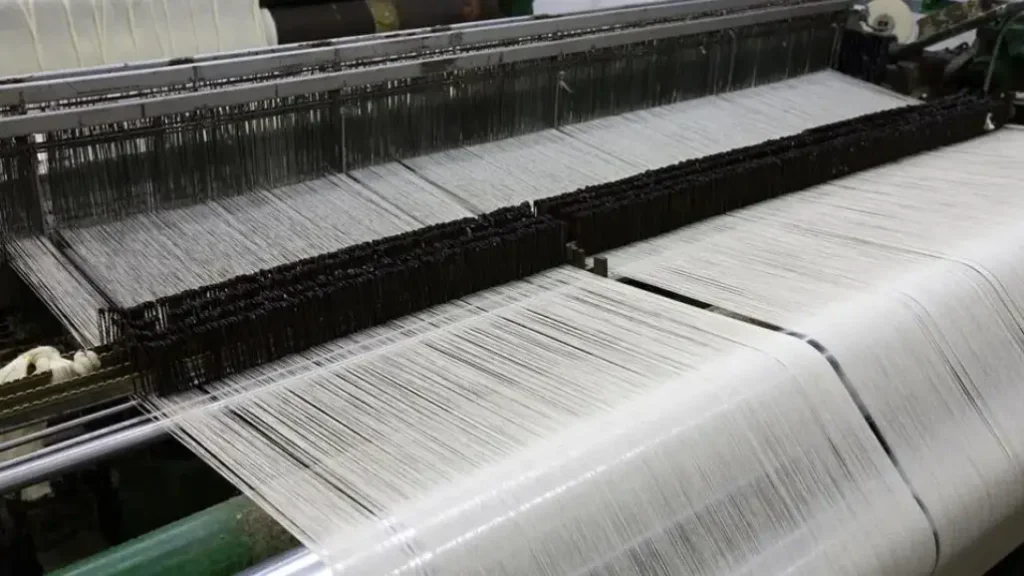
China’s Continued Dominance in Textile Production
China’s position as the world’s largest textile producer remains unchallenged. This dominance can be attributed to several factors:
- Vast infrastructure and resources: China has a well-developed industrial infrastructure, including modern textile mills, efficient transportation networks, and access to abundant raw materials.
- Competitive labor costs: Lower labor costs compared to many Western countries make textile manufacturing in China more attractive to businesses.
- Government support: The Chinese government provides various incentives and subsidies to support the textile industry, such as tax breaks and infrastructure development.
- Integrated supply chains: Chinese textile manufacturers are well-integrated into global supply chains, serving as suppliers for major brands and retailers.
- Skilled workforce: China has a large and skilled workforce in the textile industry, ensuring a steady supply of labor.
While China’s dominance is significant, it’s important to note that other countries are also making strides in textile production. India, Vietnam, and Bangladesh are emerging as major players in the global textile market, driven by factors such as lower labor costs and government support. However, China’s scale, infrastructure, and deep-rooted textile industry make it a formidable competitor.
It’s also worth mentioning that the textile industry is subject to various factors, such as economic conditions, trade policies, and consumer trends. These factors can influence the production and consumption of textiles, potentially affecting the dominance of individual countries.
Where is Cotton Fabric Made?
Cotton fabric is primarily produced in countries with large cotton production and textile industries. These countries often have favorable climates for cotton cultivation, as well as well-developed infrastructure for textile manufacturing.
Some of the major cotton-producing countries and regions include:
- China: China is the world’s largest cotton producer and textile exporter, producing a wide range of cotton fabrics.
- India: India is another major cotton producer and textile exporter, with a long history of cotton cultivation and textile manufacturing.
- United States: The United States is a significant cotton producer and has a well-developed textile industry.
- Pakistan: Pakistan is a major cotton producer and exporter, known for its high-quality cotton fabrics.
- Brazil: Brazil is a large cotton producer and has a growing textile industry.
- Turkey: Turkey is a significant cotton producer and textile exporter, with a focus on high-quality fabrics.
- Uzbekistan: Uzbekistan is a major cotton producer and exporter, known for its long-staple cotton.
It’s important to note that while these countries are major producers, cotton fabric can be made in many other regions around the world, depending on factors such as climate, economic conditions, and trade agreements.
Conclusion
The journey of fabric is a fascinating exploration of global trade, culture, and innovation. From the vast cotton fields of China to the historic mills of Europe, fabrics are produced in a diverse range of locations, each with its own unique characteristics.
As consumers, understanding where our fabrics come from allows us to appreciate the complex processes and global connections involved in textile production. It also empowers us to make informed choices about the sustainability and ethical implications of the products we buy.
Ready to explore the world of wholesale fabrics? Fanda Fabrics offers a wide range of high-quality fabrics sourced from around the globe. Contact us today to learn more about our products and services.
Call to Action:
- Visit our website: https://fandafabrics.com/
- Contact our sales team: +86-532-83308088 or info@fandafabrics.com
Let Fanda Fabrics be your partner in sourcing the perfect fabrics for your business.


